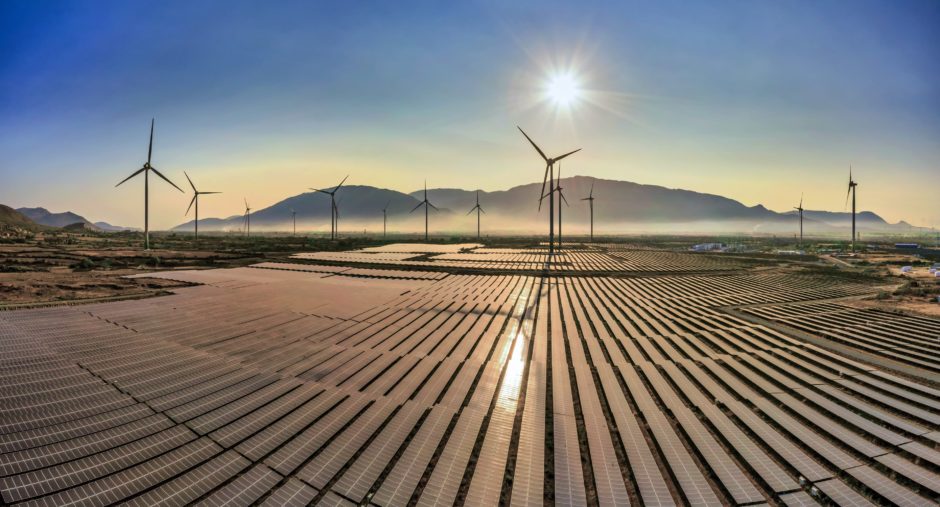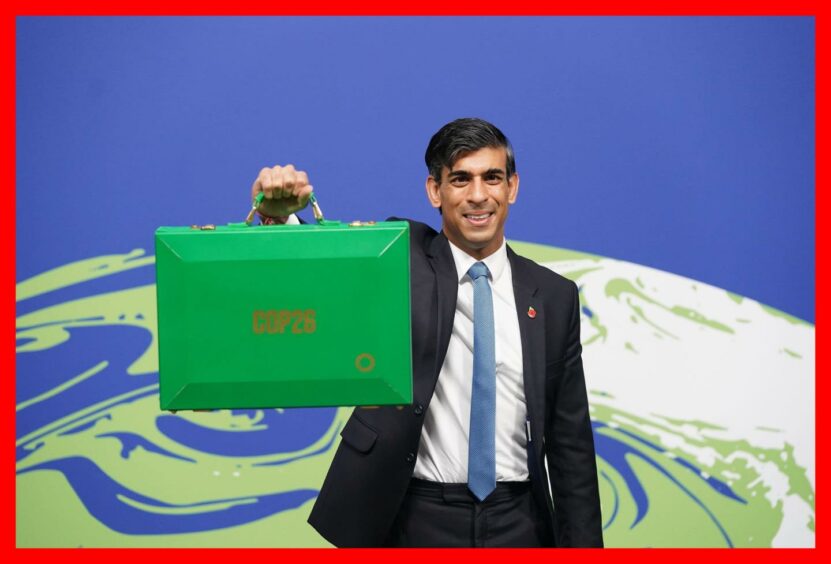
It seems fitting that the UK Government chose to round off its 10 Point Plan with a focus on what will fuel the energy transition – cold hard cash.
As oil and gas has become a less attractive proposition for many investors, they’ve been forced to shop around for lucrative new opportunities.
Low carbon technology is an exciting offer, a chance to be part of the financial muscle in the fight against climate change.
To unleash green finance and innovation, UK Government has committed to raising total research and development (R&D) investment to 2.4% of GDP by 2027.
Moreover, a £1 billion Net Zero Innovation Portfolio aims to aid the development of a range of low carbon technologies, such as floating wind and hydrogen.
Joining Energy Voice’s Ed Reed for this, the last in a series exploring the nuts and bolts of the UK Government’s 10 Point Plan, are Tom Groom, partner in financial Services, strategy and transactions at EY, and Joost Bergsma, chief executive and managing partner at Glennmont Partners.

‘When you’re looking at new technologies, they come with a level of risk’
In many ways, money and energy are two sides of the same coin; each relies on the other.
So, if the UK, and the world as a whole, is going to decarbonise at the rates that have been suggested, serious amounts of bankrolling will be needed to fuel the fire.
But persuading investors and businesses to part with their hard earned cash isn’t an easy proposition, something that’s especially true for yet unproven low carbon technologies.
On whether financing has matched innovation so far, Groom said: “It’s difficult crudely for financing to keep pace with technology changes.
“Every industry in the real economy needs to go through some form of transition between now and 2050, largely relying on new technologies to do so.
“But they’re new. When you’re looking at new technologies, they come with a level of risk that banks need to evaluate. Will it be the technology that is adopted en masse by that industry or its customer set? Will it work? Will it be superseded by another type of technology?”
Reassuringly, several low carbon solutions that were once viewed with trepidation have established themselves as serious players.
Green energy sources like wind and solar have proven their worth and have pulled in “really significant” support from investors.
But nobody wants to end up backing the transition equivalent of Betamax, so putting money in the right places is key.
Bergsma said that the success of some renewables technologies has created a barrier to entry for others; some are already so cheap that there’s no incentive for governments to look elsewhere.
He said: “Where the money is needed now is in enablers that tie these power generation technologies together.
“In that sense I think it’s relatively safe, to some extent, to back energy storage, and lithium iron type solutions seem to be well ahead of other solutions in getting the cost curve down.”
‘Government support at the right time can really help’
Government has a critical role to play in giving investors confidence by providing effective frameworks to mitigate risk.
In the UK this can be clearly seen through the Contracts for Difference (CfD) mechanism that has enabled private money to flow into the offshore wind sector.
In doing so, it has brought the cost of the technology right down, prompting the “extraordinary growth” that’s taken place in recent years.
On the increase in offshore wind deployment, Bergsma said: “Government support can be quite effective. The cost curve did come down because governments and the European Union set targets.
“Then a whole series of countries started to adopt an international energy plan and incentive schemes.
“That’s really helped to attract capital. It gave investors that secure cash flow and opened the door for banking and equity financiers to come in. Government support at the right time can really help.”
Groom said that he’s “confident” that private finance will be able to drive the energy transition, but that incentives may be needed to coax it out.
He said: “There’s not a financial institution client that I talk to that doesn’t want to be associated with facilitating transition.
“But as we discussed, they do all observe incremental risks in doing that because of the new technologies, a lack of precedent and a lack of adoption.
“When you’ve got that incremental risk, you’ve got incremental pricing – to some extent that’s a market failure.
“Industry is suggesting that they could move faster, but the private financing markets are pricing it wider than would be ideal. That unwinds over time as confidence increases.
“A big question for government is, if you want to bring that pricing in sooner, then are there policy roles that it can play to facilitate that.”
‘There is pressure on financing organisations to be more of an influencer of the economy’
The role that private finance should play in the energy transition is an interesting one.
As Groom points out, there’s a “philosophical argument” at play; should the sector simply fund the economy, or should it seek to influence it?
Though it has not have always been the norm, the rise of environmental social governance in the private sector means the latter may now well be the dominant school of thought.
Groom said: “If you think about geopolitical pressure and populism, actually a lot of that ends up being driven by customer, stakeholder, shareholder preferences and the extent to which you want to take that broader objective on board about influencing the economy.
“Given the extent to which we’re just asking fundamentally really great questions about energy transition in the UK and in Western Europe means that there is pressure on financing organisations to be more of an influencer of the economy than a passive financier.
“The pressure I observe for global banks, particularly those that are multi located, from shareholders and customers is very different.
“I think that stands us in good stead in the UK for thinking about having a lower cost of capital and financing more transitions. The demand from all the stakeholders set is more is more clear and present.”
Energy transition presents private financiers with a fresh and enticing proposition.
A market that is rapidly expanding while also helping the world to move to a cleaner and, fingers crossed, more prosperous future.
That investors are moving into the space in droves should come as welcome news to governments, and more importantly taxpayers.
There’s a long stretch left to run though and innovation, both practical and intellectual, will be central to reaching net zero.
The financial sector will have to do a lot of the heavy lifting but, as always, the rewards are there for those that call the shots correctly.
EY Insight from Tom Groom
Over the next 30 years all industries need to undertake some form of transition.
Typically this will involve new technologies (some of which are not proven yet), new production lines, new suppliers, new methods, and leveraging assets that we don’t know enough about yet (what will residual values be, will components be recyclable).
All of these uncertainties lead to both real and perceive risk when banks and investors consider financing transition projects, and those risks give rise to increased return expectations / higher costs of debt.
To better understand and mitigate those risks and in doing so bring down that so called ‘green financing premium’ it is imperative that finance providers and operators work together – it was great to scratch the surface of that when Joost and I met to talk about the financing of the energy transition.
To catch up on previous episodes of the 10 Point Pod, including the green finnce installment, please click here.
Recommended for you




 © PA
© PA







